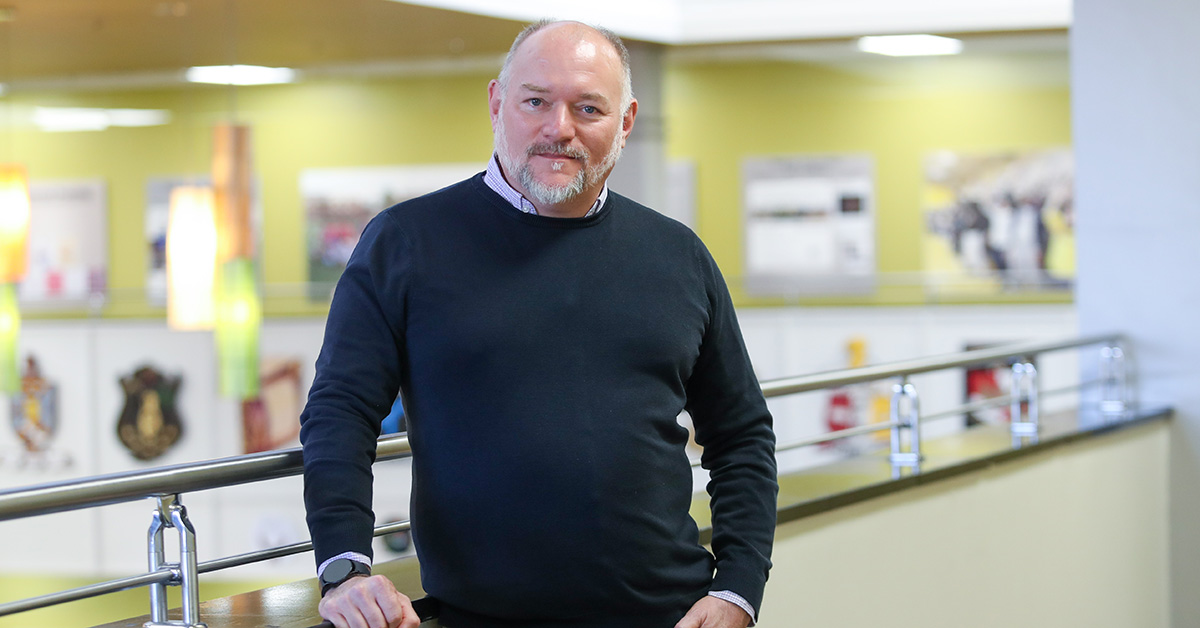Rowan historian’s research contributes to play on Nazi-era photos
Rowan historian’s research contributes to play on Nazi-era photos

Research by Rowan University historian Jody Russell Manning is helping theater audiences across the nation better understand the impact of Nazi atrocities at the Auschwitz-Birkenau concentration camp in Poland.
Manning’s photos and research have contributed to “Here There Are Blueberries,” a play by the Tectonic Theater Project that was a finalist for the 2024 Pulitzer Prize for Drama. The production is touring nationally and just wrapped up a run at Princeton’s McCarter Theatre. Next month, it moves to Beverly Hills and Berkeley in California.
Written by Moisés Kaufman and Amanda Gronich, “Here There Are Blueberries” tells the story of the discovery of a photo album depicting Nazi leaders at Solahütte, a mountaintop riverside retreat.
Built by Auschwitz prisoners, the retreat was located just 20 minutes from the concentration camp, where Nazis murdered more than a million Jews. Discovered by an American intelligence officer in 1945, the album was donated to the United States Holocaust Memorial Museum (USHMM) in 2007.
The play, which gives audiences a contemporary understanding of Holocaust perpetrators, details how the USHMM historian who received the album collaborated with other historians to identify Nazis in the photos.
The pictures depict high-ranking Nazi leaders singing, relaxing and socializing—stark contrasts to the atrocities they committed during the Holocaust. The album, which belonged to SS officer Karl-Friedrick Höcker, includes never-before-seen pictures from 1944 of SS officers Josef Mengele, the Nazi doctor known as the “angel of death,” Rudolf Höss, the commandant of Auschwitz-Birkenau, and other officers and women involved in the SS. The photos were taken during the last six months of Auschwitz.
The play’s title “Here There Are Blueberries” refers to a photo of women enjoying blueberries at the site. The same day the photo was taken, “150 prisoners (Jews and non-Jews) arrived on a transport to Auschwitz. The SS selected 21 men and 12 women for work and killed the remaining members of the transport in the gas chambers,” notes the Holocaust Encyclopedia on the website for the United States Holocaust Memorial Museum.
An assistant teaching professor in the Department of History in the College of Humanities & Social Sciences and the associate director of the Rowan’s Center for the Study of the Holocaust, Genocide, and Human Rights, Manning has spent years researching the Holocaust and its impact on the citizens of Oświęcim, where Auschwitz was located.
Manning was the first American ever to serve as an intern at the Auschwitz-Birkenau Memorial and Museum in the International Center for Education about Auschwitz and the Holocaust. He was in Poland when the USHMM shared the Höcker photographs. Historians were seeking assistance in identifying those in the photos.
Accompanied by a group of Israeli educators who were attending a three-week seminar at Auschwitz, Manning traveled to Solahütte, taking photos of the site, which became a popular recreation area in the post-World War II era.
As part of his research, Manning wrote about his trip to Solahütte with the Israelis in “Holocaust Studies: A Journal of Culture and History.” When Tectonic learned of his work, he was asked to contribute his research to the project. One of his photos appears in the production, offering audiences a post-Holocaust look at the retreat.
Manning also spoke with the cast, producer, writer, director and dramaturg, providing them with a more nuanced understanding of the impact of the photos from 1944 through to the resort’s destruction. He will contribute additional scholarship for the Playbill as the production moves to California. Manning is hopeful that the play will move to Broadway.
Taken on an inexpensive camera phone purchased in Poland, Manning’s photos are likely some of the final photos taken of the retreat area. Solahütte, which became a holiday resort that included a bar/restaurant, was destroyed in 2011 because it was no longer lucrative for its owner, Manning said.
“Things have changed dramatically at the site,” says Manning, who worked five summers at Auschwitz before landing a Fulbright fellowship in 2010 to conduct additional research. With his Rowan students, Manning discusses his research on Solahütte and the Höcker album’s impact.
“The play is extremely accurate,” he said. “As far as historical accuracy, it’s on point. I’m very happy for my work to be a part of it.”